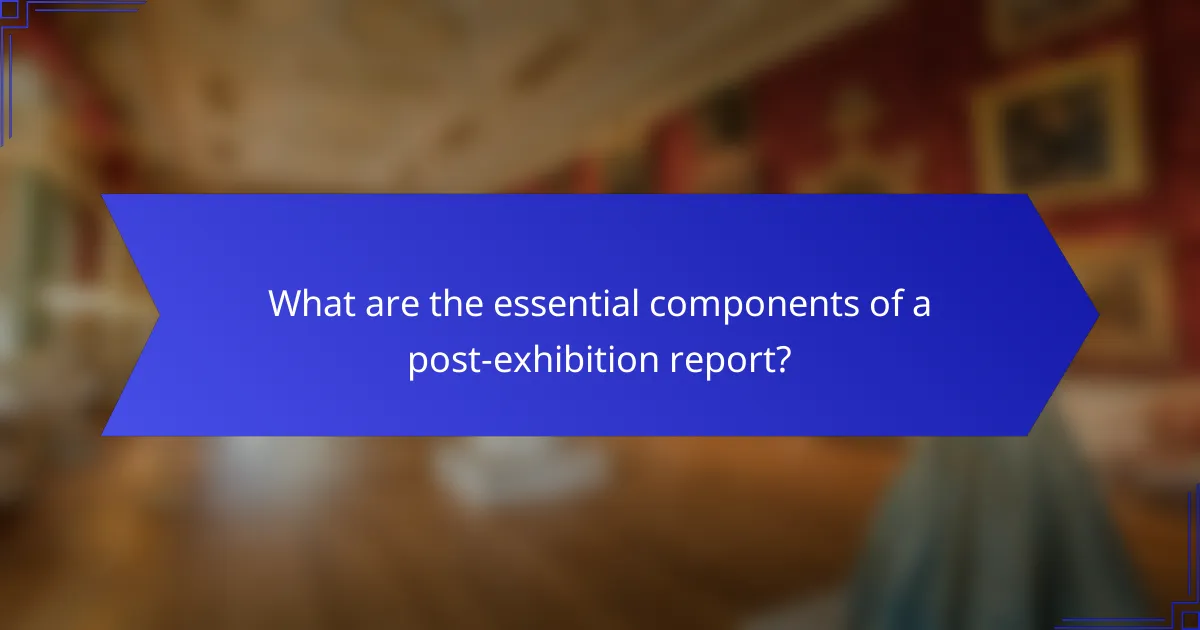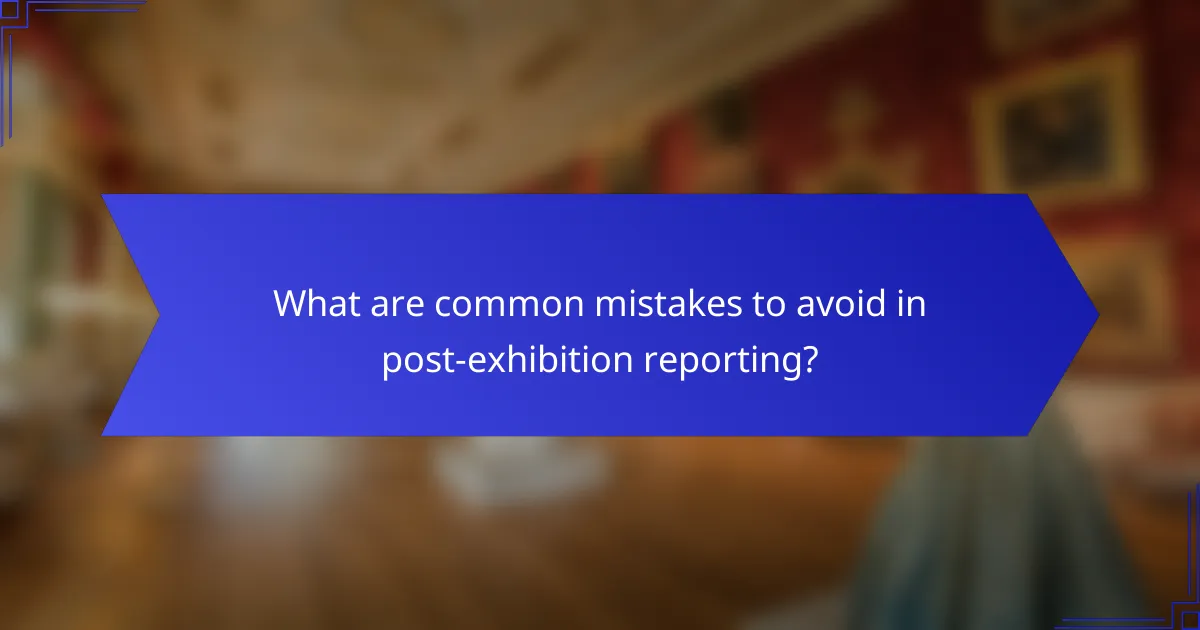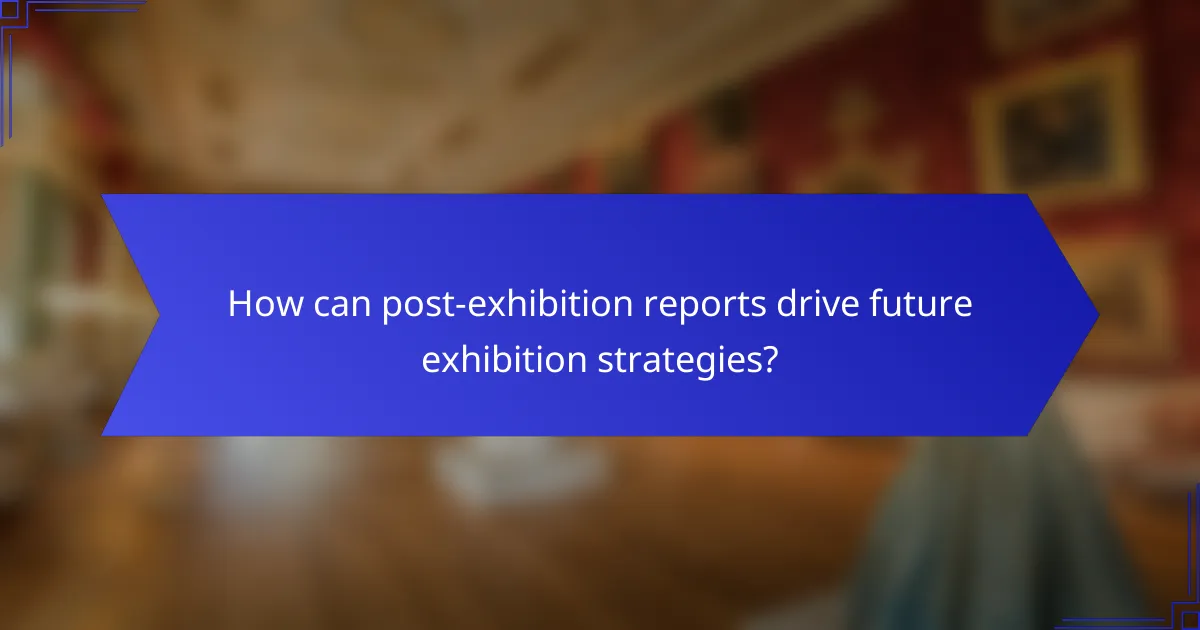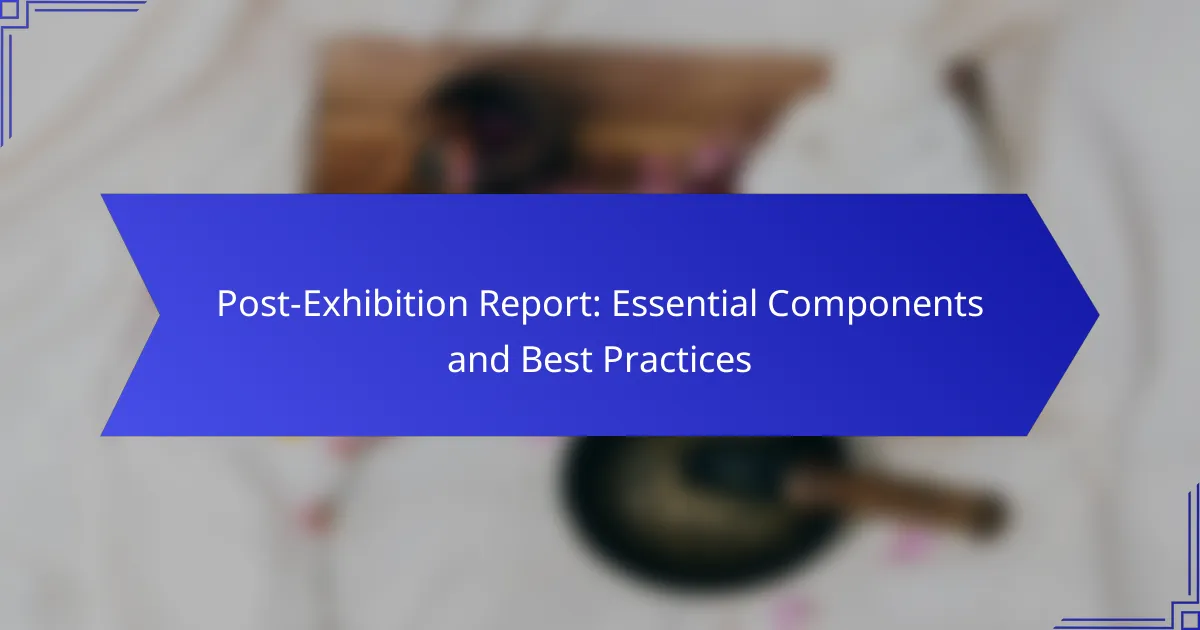A post-exhibition report serves as a vital tool for evaluating the success of an exhibition by analyzing its various components. This comprehensive document should include an executive summary, objectives, data analysis, and visitor feedback, providing actionable insights for future events. By following best practices such as timely delivery and effective visual representation, organizers can enhance the report’s clarity and utility.

What are the essential components of a post-exhibition report?
A post-exhibition report is a comprehensive document that evaluates the success of an exhibition by analyzing various components. Key elements include an executive summary, objectives and goals, data analysis, visitor feedback, and follow-up actions, all of which help in assessing performance and planning future events.
Executive summary
The executive summary provides a concise overview of the exhibition’s outcomes and key findings. It should highlight the main achievements, challenges faced, and overall impressions to give stakeholders a quick understanding of the event’s impact.
Include essential metrics such as attendance figures, leads generated, and any notable partnerships formed. This section should be clear and engaging to encourage further reading of the report.
Objectives and goals
Clearly defined objectives and goals are crucial for measuring the success of the exhibition. These should align with the overall strategy of the organization and be specific, measurable, achievable, relevant, and time-bound (SMART).
For example, an objective might be to increase brand awareness by attracting a certain number of visitors or generating a specific number of leads. Documenting these goals helps assess whether they were met and informs future planning.
Data analysis
Data analysis involves reviewing quantitative and qualitative metrics collected during the exhibition. This can include attendance statistics, engagement levels, and sales figures.
Utilize charts or tables to present this data clearly. For instance, compare visitor demographics or engagement rates across different days to identify trends and areas for improvement.
Visitor feedback
Gathering visitor feedback is essential for understanding the attendee experience. This can be done through surveys, interviews, or informal conversations during and after the event.
Summarize key insights, such as common praises or complaints, and categorize feedback into themes. This information is invaluable for making adjustments in future exhibitions to better meet visitor expectations.
Follow-up actions
Follow-up actions are critical for capitalizing on the exhibition’s outcomes. This section should outline specific steps to be taken based on the report’s findings, such as reaching out to leads or addressing visitor concerns.
Consider creating a timeline for these actions and assigning responsibilities to team members. This ensures accountability and helps maintain momentum gained from the exhibition.

How to structure a post-exhibition report effectively?
A well-structured post-exhibition report is essential for analyzing the success of an event and planning future exhibitions. It should clearly outline the exhibition’s objectives, methodologies used, and the results achieved to provide actionable insights.
Introduction section
The introduction section sets the stage for the report by summarizing the exhibition’s purpose and goals. It should briefly describe the event, including its location, dates, and target audience. This context helps readers understand the significance of the findings presented later.
Include any relevant background information that may influence the interpretation of results, such as industry trends or competitive landscape. This section should be concise yet informative, providing a clear rationale for the exhibition’s execution.
Methodology section
The methodology section outlines the approaches used to gather data and assess the exhibition’s impact. This may include surveys, interviews, or observational studies conducted during the event. Clearly define the sample size and demographic of participants to lend credibility to the findings.
Consider detailing the tools and techniques employed for data collection, such as online survey platforms or feedback forms. Transparency in methodology allows stakeholders to evaluate the reliability of the results and understand the processes behind the conclusions drawn.
Results and findings section
The results and findings section presents the data collected and the insights derived from it. Use clear visuals like charts or tables to illustrate key metrics, such as visitor numbers, engagement levels, and sales figures. This aids in quickly conveying the exhibition’s performance.
Summarize the most significant findings, highlighting trends or patterns that emerged. For instance, if a particular product received overwhelmingly positive feedback, note this as a potential area for future focus. Ensure that the conclusions are directly tied to the objectives outlined in the introduction for coherence.

What best practices should be followed in creating a post-exhibition report?
Creating an effective post-exhibition report involves several best practices that enhance clarity and utility. Key components include timely delivery, effective visual data representation, and engaging relevant stakeholders throughout the process.
Timeliness of report
Delivering the post-exhibition report promptly is crucial for maintaining relevance and impact. Aim to complete the report within a week or two after the exhibition, as this allows for fresh insights and accurate recollections of the event.
Delays can lead to missed opportunities for stakeholders to act on the findings or implement changes based on the feedback gathered. Set a clear timeline for report completion and ensure all contributors are aware of their responsibilities to meet this deadline.
Visual data representation
Utilizing visual data representation significantly enhances the readability and engagement of the report. Incorporate charts, graphs, and infographics to illustrate key metrics such as visitor numbers, engagement levels, and feedback scores.
For instance, a bar chart comparing visitor demographics can quickly convey trends and insights that might be lost in text. Ensure that visuals are clear, labeled, and directly related to the report’s findings to maximize their effectiveness.
Stakeholder involvement
Involving stakeholders in the post-exhibition report process is essential for gathering diverse perspectives and fostering collaboration. Engage team members, sponsors, and partners early in the reporting phase to collect their insights and suggestions.
Consider conducting a brief survey or holding a debrief meeting to discuss key takeaways and areas for improvement. This collaborative approach not only enriches the report but also strengthens relationships and encourages buy-in for future exhibitions.

What tools can assist in generating post-exhibition reports?
Several tools can streamline the creation of post-exhibition reports, enhancing data collection and analysis. Key options include survey tools, data visualization software, and customer relationship management (CRM) systems, each offering unique features to improve reporting efficiency.
Survey tools like SurveyMonkey
Survey tools such as SurveyMonkey facilitate the collection of attendee feedback after an exhibition. They allow you to create customized surveys that can be distributed via email or social media, helping you gather insights on visitor experiences and preferences.
When using survey tools, keep your questions clear and concise to encourage higher response rates. Aim for a mix of quantitative and qualitative questions to capture a well-rounded view of the exhibition’s impact.
Data visualization software like Tableau
Data visualization software like Tableau transforms raw data from your exhibition into visually engaging reports. This tool helps in identifying trends and patterns, making it easier to communicate findings to stakeholders.
To maximize Tableau’s effectiveness, ensure your data is clean and well-organized before importing it. Utilize various chart types to represent different data aspects, and consider interactive dashboards for real-time data exploration.
CRM systems like HubSpot
CRM systems such as HubSpot are invaluable for managing contacts and tracking interactions post-exhibition. They help you maintain relationships with leads generated during the event and can automate follow-up communications.
Leverage HubSpot’s reporting features to analyze engagement metrics and conversion rates from the exhibition. Set reminders for follow-ups and categorize leads based on their interest levels to prioritize outreach efforts effectively.

What are common mistakes to avoid in post-exhibition reporting?
Common mistakes in post-exhibition reporting include failing to set clear objectives, neglecting data analysis, and delaying the reporting process. Avoiding these pitfalls can enhance the effectiveness of your report and improve future exhibitions.
Lack of clear objectives
Without clear objectives, post-exhibition reports can lack focus and direction. Establish specific goals before the exhibition, such as measuring visitor engagement or sales conversions, to guide your reporting process.
Consider using the SMART criteria—Specific, Measurable, Achievable, Relevant, Time-bound—to define your objectives. This approach ensures clarity and helps in evaluating the exhibition’s success against predefined benchmarks.
Ignoring data analysis
Data analysis is crucial for understanding the exhibition’s impact and areas for improvement. Failing to analyze visitor data, feedback, and sales figures can lead to missed opportunities for growth.
Utilize tools like surveys and analytics software to gather insights. For instance, tracking the number of leads generated versus the number of attendees can provide valuable metrics for assessing performance.
Delayed reporting
Timeliness is key in post-exhibition reporting. Delayed reports can diminish the relevance of the findings and hinder decision-making for future events. Aim to compile and distribute your report within a few weeks of the exhibition’s conclusion.
Establish a reporting timeline that includes deadlines for data collection, analysis, and final report distribution. This proactive approach ensures stakeholders receive actionable insights while the exhibition is still fresh in their minds.

How can post-exhibition reports drive future exhibition strategies?
Post-exhibition reports are crucial for refining future exhibition strategies by providing insights into performance, attendee engagement, and overall effectiveness. These reports help identify strengths and weaknesses, guiding decisions for upcoming events.
Key Components of a Post-Exhibition Report
A comprehensive post-exhibition report typically includes an overview of objectives, attendance figures, and feedback from participants. It should also analyze the success of marketing efforts, booth design, and product presentations. Including a financial summary detailing costs versus revenue can provide a clear picture of the exhibition’s return on investment.
Best Practices for Creating Effective Reports
To create an effective post-exhibition report, start by gathering data promptly after the event. Use surveys to collect attendee feedback and analyze engagement metrics. Present findings clearly, using visuals like charts or graphs to enhance understanding.
Ensure that the report is concise and focused, highlighting key takeaways and actionable recommendations. Distributing the report to stakeholders quickly can facilitate timely discussions on future strategies.
Common Pitfalls to Avoid
One common pitfall is neglecting to include qualitative feedback alongside quantitative data, which can provide deeper insights. Avoid overwhelming the report with excessive detail; instead, focus on the most relevant information that can inform future strategies.
Another mistake is failing to follow up on the recommendations made in the report. Establishing a clear action plan based on the findings can help ensure that lessons learned are implemented in future exhibitions.
